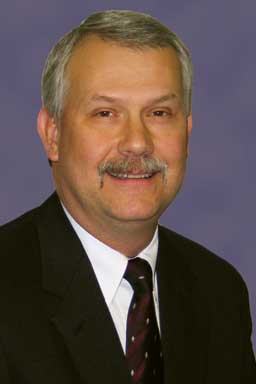Henry Ford said “Coming together is a beginning; keeping together is progress; working together is success.” This quote is a succinct summary of how associations work. It reminds me of the relationship between the AASV and the American Veterinary Medical Association (AVMA).
Since the beginnings of the AASV, our organization has maintained a relationship with the AVMA. Our incorporation in 1970 as a not-for-profit organization was under the umbrella of the AVMA. The AASV is considered by the AVMA to be an allied organization. As such, the AASV is afforded an opportunity to have a voice within the AVMA. The following statement is found on the AVMA Web site (www.avma.org): “Structured to work for its members, the AVMA acts as a collective voice for its membership and for the profession.” As long as this is true, then the AASV has an obligation as well as an opportunity to be engaged with the AVMA.
Over the years, many members of the AASV have represented our association on numerous entities within the AVMA. Currently, we have more than 12 members on AVMA committees, councils, and working groups, and two AASV members in the AVMA House of Delegates. This ongoing representation provides us with many voices and lines of communication within the AVMA. It also provides us with the opportunity to view and to better understand issues facing other areas of veterinary medicine. This can lead to working together with other veterinary organizations to find solutions that serve the best interests of AASV members and the profession. However, this representation can also lead us to sharp disagreements with factions of our profession who hold opposing views on issues.
Confronting the opposition on issues of significance to swine veterinarians underscores the importance of AASV representation to the AVMA. If we cannot effectively advocate, communicate, and educate within our own profession, then we stand little chance with stakeholders such as consumers, legislators, and regulators. One of the best opportunities to build support for our positions on subjects ranging from animal welfare to antibiotic use is from within the AVMA. For many years, our working together with the AVMA has led to success. These successful efforts, however, may face greater challenges in the future.
The demographics of our profession have changed dramatically since our beginnings. The AVMA has experienced a reduction in the percentage of members engaged in food-animal veterinary medicine. What has not declined over the years is the number of issues related to animal agriculture and food-animal veterinary medicine. The AVMA remains engaged in these issues and commits resources and staff to their handling. The greatest challenge could lie in the future if the AVMA were to develop positions and policies in conflict with those of the AASV.
Criticism has arisen within the AVMA over the disparate level of resources committed to food-animal issues, compared to the percentage of AVMA members in food-animal veterinary medicine. Linked to this criticism is the belief that food-animal veterinary medicine is somehow holding AVMA back from becoming a recognized leader on certain issues, such as animal welfare or antibiotics.
Other criticism has been aimed at the AASV from within the AVMA. It has been put forward that the AASV is too closely aligned with pork producers, including the National Pork Board (NPB) and the National Pork Producers Council (NPPC). This view held that our strong working relationship with producers constitutes a threat to our objectivity and a conflict of interest. Unfortunately, this short-sighted and parochial view ignores the strength and synergy that can be gained through that very same relationship. The AASV has several members on committees within both NPB and the NPPC. All three organizations are better working together than any single organization working totally independently of the others.
Several considerations bear vigilance in the future relationship between the AASV and the AVMA. The first is maintaining our status as an allied organization to the AVMA, which depends on the AASV meeting a threshold of our members also belonging to the AVMA. If we fail to meet that threshold, then we will lose much, if not all, of our organized representation as an allied organization within the AVMA. Thus it is important that AASV members also belong to the AVMA.
Secondly, it is vital that the AASV must not be reliant on the AVMA alone to represent our positions to federal agencies and other organizations. The AASV is stronger through the building of relationships directly with these entities and independent of the AVMA. Direct lines of communication to other organizations give the AASV the best opportunity for effectively advocating on the behalf of our members.
Lastly, consideration must be given to the possibility that someday the AVMA may abdicate its role as a voice for swine veterinarians. This could occur via AVMA positions that conflict directly with AASV positions or through overt acts by the AVMA that disenfranchise swine veterinarians. No matter the circumstances, the AASV must be prepared to take the appropriate actions to preserve an accurate and effective voice for swine veterinarians. If that cannot be done with the AVMA, then the AASV must independently assume that role.
Keeping together and working together with the AVMA are important to the AASV. Past progress and success was the result of a relationship built upon mutual respect, professionalism, collegiality, and transparency. Future progress and success can be secured by acting together while committing to those same qualities.
-- Tom Burkgren, DVM

